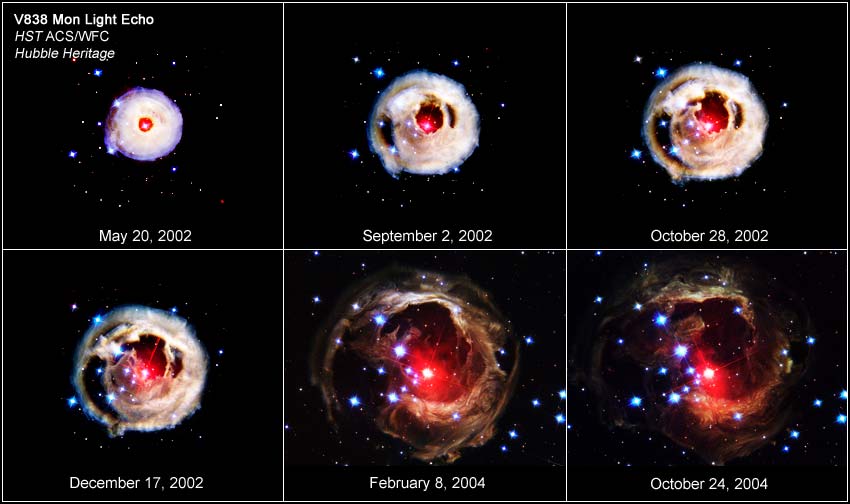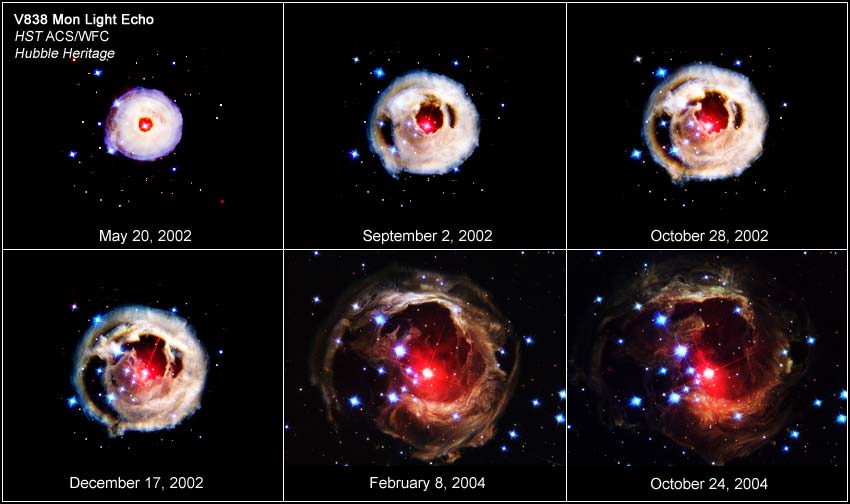

The Hubble Space Telescope captured the stellar explosion of V838 Monocerotis over the course of four years. Then scientists combined the footage into this stunning time-lapse.
The event was first observed in early 2002. The first initial flash of light was seen in January. After it began to dim, it suddenly began to brighten again (in infrared wavelengths). This brightening took place towards the start of March. After that brightening faded, another one happened in April.
This was a little confusing.
Nothing like this has ever been observed before, but there are five hypotheses about what happened. Some think that this event was just a unique supernova. Others assert that the event occurred because of a stellar collision. Such stellar collisions are known as mergebursts, in which two main sequence stars collide. The other ideas are a planetary capture event, during which a star begins to consume planets in its system, and a helium flash or a thermonuclear event.
The ultimate answer is currently unknown. Regardless of what caused it, the result is simply stunning.
WATCH: Hubble Stellar Explosion

READ NEXT: How Would A Near-Earth Supernova Impact Our Planet?